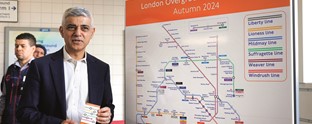Iconicity as the route to impact

Richard Taylor, managing partner at branding agency, Brandon, argues that the power of iconicity can help brands cut through the visual clutter and achieve relevance in a sea of sameness. He explores three ways in which brands can steer the right course.
Every day we’re bombarded with thousands of sales messages and visual stimuli to tickle our mental brain-buds to ultimately make us buy something. Life is consumed with the digital screen and our index finger constantly flicking up and down, no doubt twitching while we sleep. Our brain needs to work harder than ever before to decode the deluge of commercial art placed in front of us. Consequently, we cut out the noise that doesn’t resonate and home in on what we can relate to. We call it the brand’s ‘fight to stay relevant’.
Research study after research study has told us that people don’t really care about our precious consumer good brands. We’re promiscuous by nature; buying and switching between different brands within our repertoire, seeing all brands as functionally very similar. And in a post-Covid economic pinch of the pennies, value will be key so switching will be even more prevalent. Iconicity can help cut through the clutter and give you a stronger rhyme and reason for getting dropped into the shopping basket.
Icons are often the familiar and calm we look for amidst a sea of madness; be that in an advert or on a piece of packaging. The old adage of KISS (Keep It Simple Stupid) has never been as strong as it is today. The world’s leading brands have listened to the seminal work of Professor Byron Sharp, leveraging their distinctive brand assets in our minds. Think red soda, or a slogan about just doing it, a meerkat, an annoying opera singer or even Gary Lineker. Each of these distinctive assets instantly takes your mind to a brand. They are powerful memory structures for brands to own and leverage time and time again. But just how can you help your brand steer the right course for success and win its fight for relevance?
Deconstruct. Stop and reflect on what your brand stands for in people’s minds today and where you want to take them on the journey tomorrow. What images, symbols, colours, etc. come to mind? Don’t assume you know, as you may well end up trying to leverage an element that has little to no iconicity.
But there is a watch out. One of the biggest challenges we see is when new marketers come aboard and want to make their mark, often trying to start afresh and forgetting about the powerful iconic assets that they have in their arsenal. New Moonpig CMO, Kristof Fahy, called his decision to resurrect its pink pig a no brainer! The colour pink and iconic jingle are now once again front and centre.
Amplify. McDonald’s has done a great job at this with the use of its iconic golden arches in its recent ‘We Deliver’ advertising, cutting into an element of the iconic arch and using it as a beacon from their fast-food restaurant straight into your home. The team looked closely at what made McDonald’s famous in the first place, what visual space they own in our minds and then leveraged that memory to ensure we keep coming back for more.
Be coherent rather than consisten. Don’t be afraid to break the rules. Too often we get caught up in a world that focuses on brand consistency, with strict and rigid brand guidelines that prohibit and restrict the powerful use of our assets. Can you imagine the shock and horror on the face of the poor brand guardian for McDonald’s seeing his beloved golden arches being cut and cropped to their dismay?
At Brandon, we talk more about brand coherency as opposed to consistency. If a brand expression is coherent and you get it, then that’s enough. Iconicity is there to be leveraged and stay relevant to our time. Just as we as humans constantly evolve, the use of our icons needs to also stay relevant to their time in history.
So, to win your fight for relevance and drive true transformational commercial change, know what assets you have in your arsenal, amplify your iconicity to demand attention and leverage those powerful memory structures, and don’t be afraid to break the rules. It sounds simple, it is simple, but simple is often really hard!












